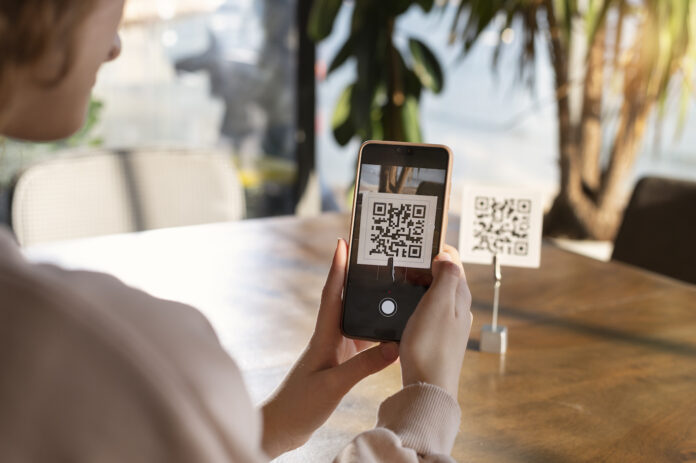The digital landscape continues to evolve, and with it comes an increasing need for fast, secure, and convenient ways to conduct financial transactions. The QR code scanner online has risen as a versatile tool in this regard, offering a seamless method for executing digital payments. This article will guide you through the process of using an online QR code scanner for secure and quick digital transactions, and touch upon the importance of implementing One-Time Passwords (OTP) to enhance security.
Table of Contents
What is a QR Code Scanner Online?
A QR code scanner online is a web-based tool that allows users to scan QR codes without needing to download a dedicated application. QR codes, or Quick Response codes, are two-dimensional barcodes that can store a large amount of data. These codes are widely used in various industries, particularly in facilitating digital transactions because they provide a quick and easy method for exchanging information. When you scan a QR code with an online QR code scanner, you can access, verify, or even complete a transaction conveniently.
Steps to Use an Online QR Code Scanner for Digital Transactions
Step 1: Find a Reliable QR Code Scanner Online
Search for a trustworthy and reputable online QR code scanner. Look for websites that are well-reviewed and highly rated by users to ensure the service is secure and efficient. Websites like QR Code Reader Online, GoQR.me, and others offer free QR code scanning services.
Step 2: Access the Online QR Code Scanner
Visit the QR code scanning website of your choice. Most online QR code scanners feature a simple user interface that guides you through the scanning process.
Step 3: Scan the QR Code
Using the QR code scanner, align your device’s camera with the QR code you want to scan. The scanner will automatically read the QR code and decode the information.
Step 4: Verify the Information
Once the QR code is scanned, the information contained within it will be displayed. This may include payment details, an account number, or a URL. Always verify that the information is correct before proceeding with the transaction.
Step 5: Complete the Transaction
After verifying the information, follow the prompts or instructions to complete your digital transaction. This may involve logging into a payment portal, confirming the transaction amount, or entering additional details.
Enhancing Security with OTP
While QR codes offer a convenient way to conduct digital transactions, it is important to integrate additional security measures. One such measure is the use of One-Time Passwords (OTP).
What is OTP?
An OTP is a unique, temporary password generated for a single transaction or login session. It is typically sent to the user’s mobile device or email and must be entered within a certain time frame to complete the transaction. Implementing OTP adds an extra layer of security, ensuring that even if someone else gains access to your QR code, they cannot complete the transaction without the OTP.
How to Use OTP with QR Code Transactions
Step 1: Enable OTP Authentication
Most digital payment platforms offer the option to enable OTP authentication. Go to the security settings of your payment platform and enable OTP.
Step 2: Receive OTP
When you are ready to complete a transaction using a QR code scanner online, you will receive an OTP on your registered mobile device or email.
Step 3: Enter OTP
Enter the OTP within the specified time frame to authenticate and complete your transaction.
The Advantages of Using a QR Code Scanner Online
Convenience
Using an online QR code scanner to facilitate digital transactions is highly convenient. It eliminates the need to download multiple apps and allows users to complete transactions quickly.
Speed
Scanning a QR code takes seconds, and transactions can be processed almost instantaneously. This real-time capability is especially useful in retail and service industries where quick payment processing is crucial.
Mobility
An online QR code scanner can be accessed from any device with an internet connection and a camera, providing flexibility and mobility for users on the go.
Reduced Contact
In today’s health-conscious world, reducing physical contact is important. QR codes facilitate contactless transactions, minimizing the need for physical interaction with payment terminals or cash.
Security Concerns and Best Practices
Although QR codes offer many advantages, there are some security concerns to be aware of. Cybercriminals can create fake QR codes to direct users to malicious websites or capture sensitive information during UPI transactions.
To mitigate these risks:
Use Trusted Sources: Only scan QR codes from trusted and reputable sources. Be cautious of codes displayed in public, as they can be altered.
Verify URLs: Before completing any transaction, verify the URL and information connected to the QR code.
Enable Security Features: Always enable additional security features such as OTP, two-factor authentication, and secure connections (HTTPS).
Conclusion
Using a QR code scanner online presents a fast, efficient, and secure method for conducting digital transactions. By understanding the steps involved and incorporating additional security measures like OTP, you can ensure that your digital payments are both quick and safe. In an increasingly digital world, mastering the use of online QR code scanners and prioritizing security practices will enhance your transactional experiences.
